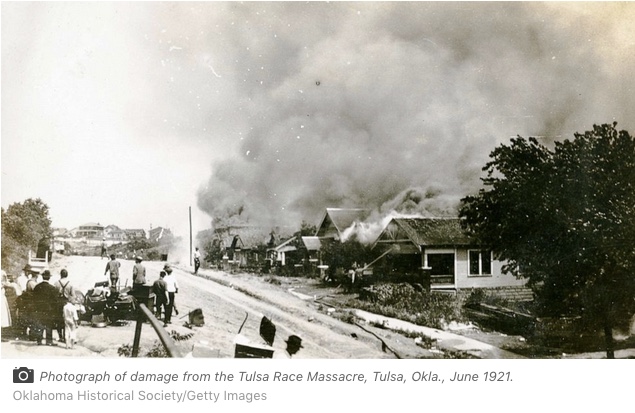. . .
The Tulsa Race Massacre began on May 31, 1921, and continued into the early morning hours of June 1. What began as a confrontation between groups of white and black residents following the arrest of a young black man ended in the destruction of 35 city blocks in the city’s Greenwood District, an affluent area that had become known as “Black Wall Street,” home to 1,200 black residents and 300 black-owned businesses.
In addition to the confrontation, many reports on the massacre say the success of the area also fueled the violence. Part of the official report on the massacre reads, “Many white Tulsans were especially incensed when black Tulsans disregarded, or challenged, Jim Crow practices. Others were both enraged at, and jealous of, the material success of some of Greenwood’s leading citizens.”
Newspaper reports following the massacre said only 36 people died, but historians now believe as many 300 people were killed as white mobs destroyed and burned homes, businesses, churches, schools, hospitals and libraries in the predominantly black area.
No one was prosecuted for those deaths or the destruction of property, and, nearly 100 years later, many victims of the massacre have not been identified because their remains have not been found and the event has been allowed to fade from the history books. It was only earlier this year that Oklahoma lawmakers announced a plan to include the 1921 Tulsa Race Massacre in the curriculums of all state schools.




